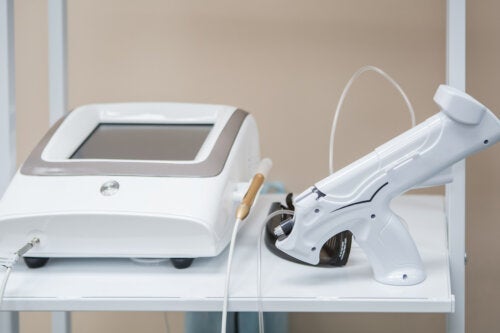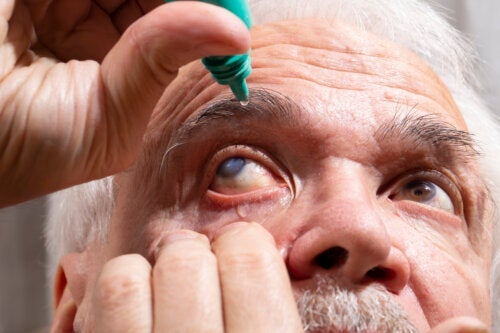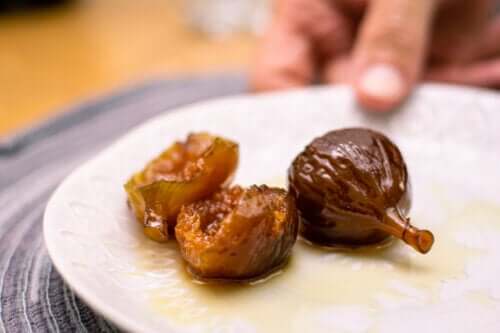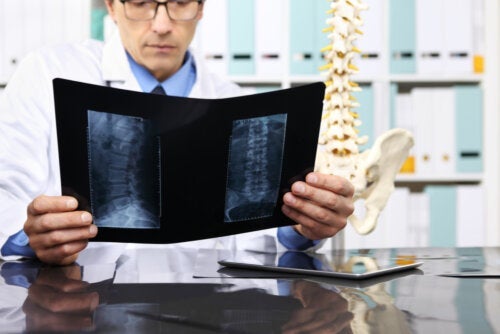シミを消してくれる自然の材料
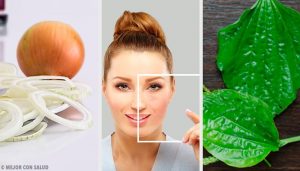
シミはもっとも大きなお肌の悩みの一つでしょう。日光の浴びすぎや遺伝、年齢、薬品などの副作用によって引き起こされるホルモンの病気など様々な原因があります。
今日は、シミを目立たなくしたり、完全に取り除いてくれる効果のある、簡単な14のナチュラルマスクの作り方をご紹介します。
顔のシミを取るときに気をつけること
マスクの効果が最大限に生かされるように、以下の点に注意しましょう。また、材料を事前に準備しておくことも大切です。全ての材料を手元に置き、必要であればタイマーを使いましょう。
- 今日紹介するマスクは角質をとった後に使いましょう。
- 髪の毛が顔にかからないように、あげておきましょう。
- 日常的に日焼け止めを使いましょう。
- 何かアレルギーがある場合は、使用する前にテストしてから使いましょう。
こちらの記事もお読みください:
オススメの材料
1、アロエベラ
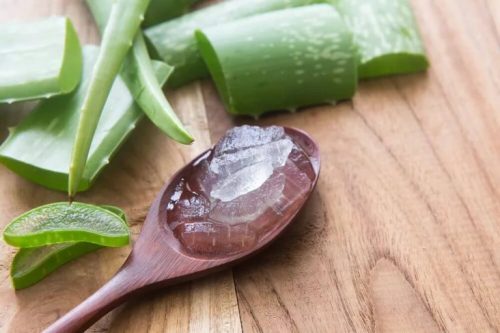
アロエベラはスキンケアに最適な植物です。市販のシミ取り商品にもよく含まれています。殺菌剤、保湿剤としての働きがあり、自然に肌を若返らせてくれる効果もあります。また肌の弾力性と柔らかさを高めてくれる効果もあります。
夜、洗顔後、化粧水をつけた後の肌に、アロエベラのマスクを使用するといいでしょう。そうすることで、寝ている間にアロエのジェルが浸透します。翌朝によく洗顔するのを忘れないようにしましょう。
2、牛乳
牛乳は乳酸を含む材料で、シミを明るくしたり、取り除いたりするのに効果的です。直接牛乳を肌につけることで、乳酸の効果が得られます。牛乳を鍋で温めましょう。あったまった牛乳はコットンなどにつけて、肌にパッティングします。その後最低でも30分は置いてから洗い流すようにしましょう。
3、お酢
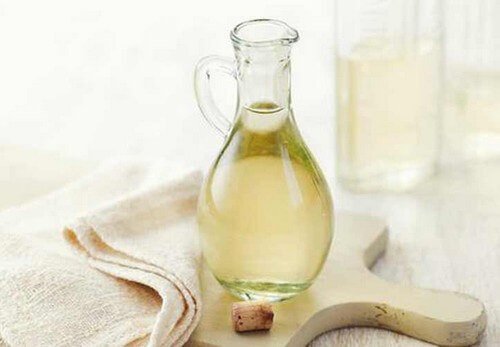
お酢は、シミを取り除くのに一番使われている家庭調味料です。使い方もとても簡単です。大さじ1杯のリンゴ酢を2リットルの水で薄めましょう。それをコットンなどを使い肌にパッティングして染み込ませます。数週間、毎晩続けると効果が現れます。
この記事もお読みください:重曹と酢を使ったお勧め洗剤5選
4、広葉オオバコ
広葉オオバコもシミを取り除くのに効果的です。200mlのオオバコティーを作りましょう。水1リットルを沸騰させます。沸騰したお湯をカップに移し、そこに大さじ2杯分の葉を入れます。20分置き、漉しましょう。コットンボールを使い顔につけましょう。
5、レモン
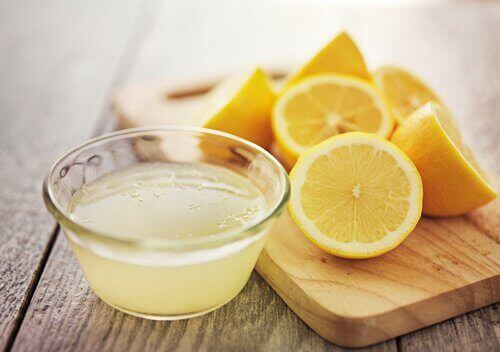
レモン汁は肌を明るくさせて、輝かせてくれる働きがあります。シミが気になる部分に優しくマッサージしながら染み込ませましょう。夜に行う場合は、そのまま一晩置くようにしましょう。もし日光を浴びた場合は、ぬるま湯で20分後に流すようにしましょう。
6、玉ねぎ
玉ねぎもシミを取り除くには最適の材料です。スライスし、シミが気になる箇所にすりつけましょう。30分ほど置き、ぬるま湯で洗い流します。行えば行うほど効果が得られるでしょう。玉ねぎの汁も化粧水として使うこともできます。
7、トマト
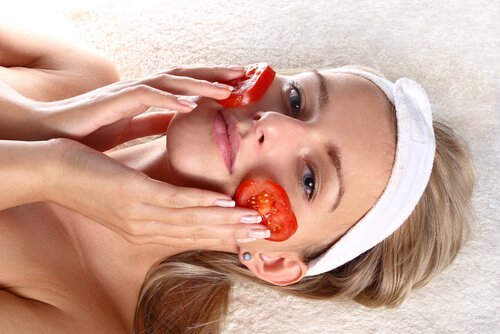
トマトもシミを取ってくれます。スライスし毎日顔に15分つけてみましょう。ビャクダンの粉やレモンなどを加えると効果が早く現れます。
8、ニワトコの実
ニワトコの実もシミを取ってくれるのに心強い食材です。500mlの水に大さじ1杯のニワトコの実を入れて、10分沸騰させます。火を止めて冷ましたら、漉してシミがある箇所につけましょう。1日2回行いましょう。日光に当たりすぎてできたシミに特に効果的です。
9、二十日大根
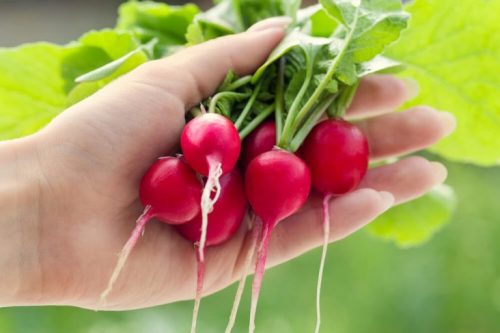
二十日大根はシミを取り除くのに最適な食材です。肌を明るくしてくれる成分の効果を得るには、二十日大根をすりおろして、レモン汁と混ぜてみましょう。それをコットンなどに含ませて顔につけます。15〜20分ほど置いて、ぬるま湯で流しましょう。日中に使っても、一晩置いてもどちらでもよいでしょう。
10、バナナ
バナナにも肌を明るくしてくれる成分が含まれています。バナナ1本をフォークで潰して、レモン汁1個分を加えることで簡単にマスクを作ることができます。20分ほど置いてからぬるま湯で洗い流しましょう。1週間に4回ほど行うといいでしょう。
11、大麦
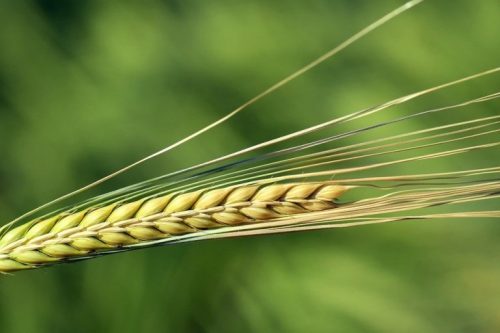
シミを取ってくれる化粧水を作るには、100グラムの大麦を1リットルの水で煎じましょう。肌につけて30分ほど置きます。また、漉して残った大麦を布に包んで黒いシミがある部分をマッサージするのも効果的です。1日2回行いましょう。
12、小麦胚芽
小麦の胚芽オイルは肌のシミと闘ってくれる心強い成分です。就寝前に肌につけて、肌に吸収されるまで優しくマッサージしましょう。
13、パパイヤ
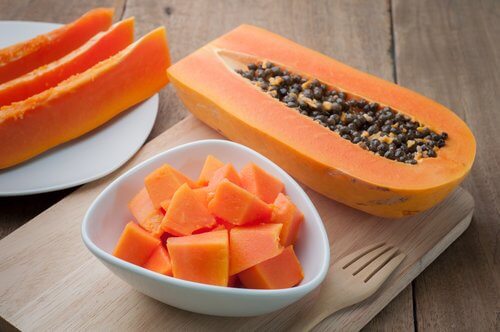
美味しいパパイヤを食べたあとは、皮を残して置くようにしましょう。皮の内側を肌につけてマッサージすると、シミを減らしたり、取り除いてくれたりする効果があります。また肌を若くしてくれ、シワを予防してくれます。
14、パセリ
肌を明るくしてくれる成分が含まれており、どんなシミをも綺麗にしてくれます。少量のパセリをすりつぶし、ガーゼなどでシミが気になる部分につけてみましょう。
引用された全ての情報源は、品質、信頼性、時代性、および妥当性を確保するために、私たちのチームによって綿密に審査されました。この記事の参考文献は、学術的または科学的に正確で信頼性があると考えられています。
- Alvin, G., Catambay, N., Vergara, A., & Jamora, M. J. (2011). A comparative study of the safety and efficacy of 75% mulberry (Morus alba) extract oil versus placebo as a topical treatment for melasma: a randomized, single-blind, placebo-controlled trial. Journal of drugs in dermatology: JDD, 10(9), 1025–1031.https://pubmed.ncbi.nlm.nih.gov/22052272/
- Allgisna, K. N., Hindun, S., & Rantika, N. (2021). Perbandingan Beberapa Ekstrak Kulit Buah sebagai Anti-hiperpigmentasi: Review: Comparison of Fruit Skin Extract as Anti-hyperpigmentation. Jurnal Sains Dan Kesehatan (J. Sains Kes.), 3(2), 335-342. https://jsk.farmasi.unmul.ac.id/index.php/jsk/article/view/403
- Bavarsad, N., Mapar, M. A., Safaezadeh, M., & Latifi, S. M. (2021). A double-blind, placebo-controlled randomized trial of skin-lightening cream containing lycopene and wheat bran extract on melasma. Journal of cosmetic dermatology, 20(6), 1795–1800. https://pubmed.ncbi.nlm.nih.gov/33151615/
- Costa, A., Moisés, T. A., Cordero, T., Alves, C. R., & Marmirori, J. (2010). Association of emblica, licorice and belides as an alternative to hydroquinone in the clinical treatment of melasma. Anais brasileiros de dermatologia, 85(5), 613–620. https://pubmed.ncbi.nlm.nih.gov/21152784/
- Choi, S., Lee, S. K., Kim, J. E., Chung, M. H., & Park, Y. I. (2002). Aloesin inhibits hyperpigmentation induced by UV radiation. Clinical and experimental dermatology, 27(6), 513–515. https://pubmed.ncbi.nlm.nih.gov/12372097/
- Dahl, A., Yatskayer, M., Raab, S., & Oresajo, C. (2013). Tolerance and efficacy of a product containing ellagic and salicylic acids in reducing hyperpigmentation and dark spots in comparison with 4% hydroquinone. Journal of drugs in dermatology: JDD, 12(1), 52–58. https://pubmed.ncbi.nlm.nih.gov/23377328/
- Ertam, I., Mutlu, B., Unal, I., Alper, S., Kivçak, B., & Ozer, O. (2008). Efficiency of ellagic acid and arbutin in melasma: a randomized, prospective, open-label study. The Journal of dermatology, 35(9), 570–574. https://pubmed.ncbi.nlm.nih.gov/18837701/
- Hermanns, J. F., Petit, L., Martalo, O., Piérard-Franchimont, C., Cauwenbergh, G., & Piérard, G. E. (2000). Unraveling the patterns of subclinical pheomelanin-enriched facial hyperpigmentation: effect of depigmenting agents. Dermatology, 201(2), 118–122. https://pubmed.ncbi.nlm.nih.gov/11053913/
- Hollinger, J. C., Angra, K., & Halder, R. M. (2018). Are Natural Ingredients Effective in the Management of Hyperpigmentation? A Systematic Review. The Journal of clinical and aesthetic dermatology, 11(2), 28–37. https://www.ncbi.nlm.nih.gov/pmc/articles/PMC5843359/
- Jan, B., Parveen, R., Zahiruddin, S., Khan, M. U., Mohapatra, S., & Ahmad, S. (2021). Nutritional constituents of mulberry and their potential applications in food and pharmaceuticals: A review. Saudi journal of biological sciences, 28(7), 3909–3921. https://www.ncbi.nlm.nih.gov/pmc/articles/PMC8241616/
- Kang, M. H., Jang, G. Y., Ji, Y. J., Lee, J. H., Choi, S. J., Hyun, T. K., & Kim, H. D. (2021). Antioxidant and Anti-Melanogenic Activities of Heat-Treated Licorice (Wongam, Glycyrrhiza glabra × G. uralensis) Extract. Current issues in molecular biology, 43(2), 1171–1187. https://www.ncbi.nlm.nih.gov/pmc/articles/PMC8928971/
- Khosravan, S., Alami, A., Mohammadzadeh-Moghadam, H., & Ramezani, V. (2017). The effect of topical use of Petroselinum crispum (parsley) versus that of hydroquinone cream on reduction of epidermal melasma: a randomized clinical trial. Holistic Nursing Practice, 31(1), 16-20. https://journals.lww.com/hnpjournal/Abstract/2017/01000/The_Effect_of_Topical_Use_of_Petroselinum_Crispum.4.aspx
- Makino, E. T., Mehta, R. C., Banga, A., Jain, P., Sigler, M. L., & Sonti, S. (2013). Evaluation of a hydroquinone-free skin brightening product using in vitro inhibition of melanogenesis and clinical reduction of ultraviolet-induced hyperpigmentation. Journal of drugs in dermatology: JDD, 12(3), s16–s20. https://pubmed.ncbi.nlm.nih.gov/23545928/
- Phacharapiyangkul, N., Thirapanmethee, K., Sa-Ngiamsuntorn, K., Panich, U., Lee, C. H., & Chomnawang, M. T. (2019). Effect of Sucrier Banana Peel Extracts on Inhibition of Melanogenesis through the ERK Signaling Pathway. International journal of medical sciences, 16(4), 602–606. https://www.ncbi.nlm.nih.gov/pmc/articles/PMC6535666/
- Pillaiyar, T., Manickam, M., & Namasivayam, V. (2017). Skin whitening agents: medicinal chemistry perspective of tyrosinase inhibitors. Journal of enzyme inhibition and medicinal chemistry, 32(1), 403–425. https://www.ncbi.nlm.nih.gov/pmc/articles/PMC6010116/
- Rizwan, M., Rodriguez‐Blanco, I., Harbottle, A., Birch‐Machin, M. A., Watson, R. E. B., & Rhodes, L. E. (2011). Tomato paste rich in lycopene protects against cutaneous photodamage in humans in vivo: a randomized controlled trial. British Journal of Dermatology, 164(1), 154-162. https://onlinelibrary.wiley.com/doi/abs/10.1111/j.1365-2133.2010.10057.x
- Singh, S. K., Baker, R., Wibawa, J. I., Bell, M., & Tobin, D. J. (2013). The effects of Sophora angustifolia and other natural plant extracts on melanogenesis and melanin transfer in human skin cells. Experimental dermatology, 22(1), 67–69. https://pubmed.ncbi.nlm.nih.gov/23278898/
- Sharif, A., Akhtar, N., Khan, M. S., Menaa, A., Menaa, B., Khan, B. A., & Menaa, F. (2015). Formulation and evaluation on human skin of a water-in-oil emulsion containing Muscat hamburg black grape seed extract. International journal of cosmetic science, 37(2), 253–258. https://pubmed.ncbi.nlm.nih.gov/25402429/
- Shimogaki, H., Tanaka, Y., Tamai, H., & Masuda, M. (2000). In vitro and in vivo evaluation of ellagic acid on melanogenesis inhibition. International journal of cosmetic science, 22(4), 291–303. https://pubmed.ncbi.nlm.nih.gov/18503416/
- Swanson, C., Deng, D., Robinson, L., & Raleigh, P. (2010). Topical turmeric extract in a moisturizing cream formula reduces the appearance of facial spots and fine lines and wrinkles on human facial skin. Journal of the American Academy of Dermatology, 62(3), 01591-6, AB19. https://www.jaad.org/article/S0190-9622(09)01591-6/fulltext
- Syed, T., Aly, R., Ahmad, S. A., Andersson, T., & Wong, W. (2009, March). Management of melasma with 2% analogue of green tea extract in a hydrophilic cream: a placebo-controlled, double-blind study. In Journal of the American Academy of Dermatology, 60(3), AB160. https://www.jaad.org/article/S0190-9622(08)02205-6/fulltext
- Xing, M., Wang, X., Zhao, L., Zhou, Z., Liu, H., Wang, B., Cheng, A., Zhang, S., & Gao, Y. (2021). Novel dissolving microneedles preparation for synergistic melasma therapy: Combined effects of tranexamic acid and licorice extract. International journal of pharmaceutics, 600, 120406. https://pubmed.ncbi.nlm.nih.gov/33711468/
- Yamakoshi, J., Sano, A., Tokutake, S., Saito, M., Kikuchi, M., Kubota, Y., Kawachi, Y., & Otsuka, F. (2004). Oral intake of proanthocyanidin-rich extract from grape seeds improves chloasma. Phytotherapy research: PTR, 18(11), 895–899. https://pubmed.ncbi.nlm.nih.gov/15597304/
- Yokota, T., Nishio, H., Kubota, Y., & Mizoguchi, M. (1998). The inhibitory effect of glabridin from licorice extracts on melanogenesis and inflammation. Pigment cell research, 11(6), 355–361. https://pubmed.ncbi.nlm.nih.gov/9870547/
- Wallo, W., Nebus, J., & Leyden, J. J. (2007). Efficacy of a soy moisturizer in photoaging: a double-blind, vehicle-controlled, 12-week study. Journal of drugs in dermatology: JDD, 6(9), 917–922. https://pubmed.ncbi.nlm.nih.gov/17941363/
- Wang, Y., Zhao, J., Jiang, L., & Mu, Y. (2021). The Application of Skin Care Product in Melasma Treatment. Clinical, cosmetic and investigational dermatology, 14, 1165–1171. https://www.ncbi.nlm.nih.gov/pmc/articles/PMC8435474/
- Wang, Z., Li, X., Yang, Z., He, X., Tu, J., & Zhang, T. (2008). Effects of aloesin on melanogenesis in pigmented skin equivalents. International journal of cosmetic science, 30(2), 121–130. https://pubmed.ncbi.nlm.nih.gov/18377621/
- Wang, J., He, Z., & Raghavan, V. (2022). Soybean allergy: characteristics, mechanisms, detection and its reduction through novel food processing techniques. Critical reviews in food science and nutrition, 1–14. https://pubmed.ncbi.nlm.nih.gov/35075969/
- Zhang, X., Zhou, Q., Qi, Y., Chen, X., Deng, J., Zhang, Y., Li, R., & Fan, J. (2023). The effect of tomato and lycopene on clinical characteristics and molecular markers of UV-induced skin deterioration: A systematic review and meta-analysis of intervention trials. Critical reviews in food science and nutrition, 1–20. Advance online publication. https://pubmed.ncbi.nlm.nih.gov/36606553/
このテキストは情報提供のみを目的としており、専門家との相談を代替するものではありません。疑問がある場合は、専門家に相談してください。




